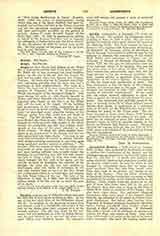

Asaph (or Asa), Saint, first Bishop of the Welsh See of that name (second half of the sixth century). No Welsh life of him is extant, but local tradition points out the site of his ash tree, his church, his well, and his valley, Onen Asa, Fynnon Asa, Llanasa, Pantasa. All these sites are in Tengenel, near Holywell, indicating probably that the saint once had a hermitage in that neighborhood. The want of a Welsh life, however, is in part compensated for by Jocelyn of Furness’s life of St. Kentigern, or Mungo, the founder of the Diocese of Glasgow. This saint during his exile (c. 545) betook himself to Wales, and there founded the Celtic Monastery of Llanelwy (the church on the Elwy), as the Welsh still call the town of St. Asaph. Of the building and government of few Celtic monasteries do we know so much as about Llanelwy. The church was built “of smoothed wood, after the fashion of the Britons, seeing that they could not yet build of stone”. The 965 disciples, of whom Asa was one, were divided into three groups: 300 of the unlettered farmed the outlying lands, 300 worked in the offices around the monastery, and 365 (the number corresponds to the days of the year) attended to the divine services. Of these the oldest assisted Kentigern in the government of the diocese, and the rest were subdivided into three choirs. “As soon as one choir had terminated its service in church, immediately another entering commenced it: and that again being concluded another entered to celebrate.” The founder, after the manner of other Celtic saints, used frequently to pray standing in the icy cold river, and once, having suffered very severely under this hardship, he sent the boy Asa, who was then attending him, to bring a fagot to burn and warm him. Asaph brought him live coals in his apron, and the miracle revealed to Kentigern the sanctity of his disciple. So when the old man was recalled to Strathclyde, after the battle of Ardderyd, in 573 (the only definite date we have in the life), Asaph was consecrated bishop to succeed him, and became the first Welsh bishop of the see. The feast of his deposition is kept on May 1, but we possess no further details of his life, nor do we know the year of his death.
J. H. POLLEN

